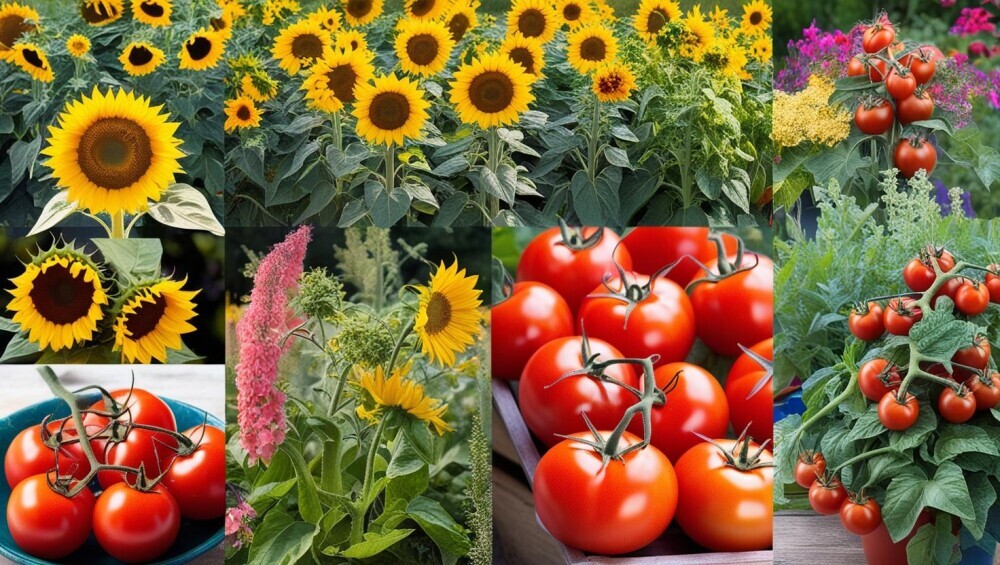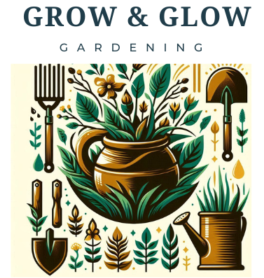 Knowing your garden’s environment is like setting the stage for a great show. The first thing to check out is how much sunlight your garden gets throughout the day. Some plants love to soak up the sun, while others prefer playing it cool in the shade. So, spend a day or two observing where the sun hits at different times to map out sun and shade spots.
Knowing your garden’s environment is like setting the stage for a great show. The first thing to check out is how much sunlight your garden gets throughout the day. Some plants love to soak up the sun, while others prefer playing it cool in the shade. So, spend a day or two observing where the sun hits at different times to map out sun and shade spots.
Next up is the nitty-gritty of soil quality. Whether you’ve got sandy, loamy, or clay soil, each has its own vibe. Give your soil a little test to figure out its type and pH level. This will guide you to pick plants that will feel right at home and grow happily.
Don’t forget the climate! If you’re living near the coast or up in the mountains, the weather will play a big part in what thrives in your garden. Keep the local climate in mind to avoid planting something that’ll struggle to survive through winter or wilt in the summer heat.
Also, think about how much space you have. Whether you’re working with a sprawling yard or a tiny balcony, you gotta plan out where everything will fit. Consider the mature size of plants to prevent overcrowding, and make the most of every inch you have.
Selecting the Best Plant Types
Choosing the right plants for your garden can feel a bit like picking out an outfit—you want style, durability, and comfort all rolled into one. Let’s break it down: Start with the basics of perennials versus annuals. Perennials are those steady friends that come back year after year, while annuals give a burst of color for a single season before saying goodbye. Think about what fits your gardening goals.
Native plants are kind of like hometown heroes. They’ve already adapted to your climate and soil, which means less work for you. Plus, they’re great for supporting local wildlife ecosystems. A win-win for you and the environment!
Attracting pollinators is another cool way to make your garden more vibrant and lively. Imagine butterflies fluttering around or bees buzzing happily, knowing you’re helping sustain these vital creatures. Opt for plants like lavender or sunflowers that offer nectar and pollen.
Deciding between edible and ornamental plants is about balancing function and flair. While there’s nothing like picking fresh tomatoes from your own backyard, having a garden that’s easy on the eyes brings a whole new level of satisfaction. Mix and match to fit your vision and needs, and you’ll set the scene for a garden that’s both beautiful and productive.
Balancing Aesthetic Appeal and Practicality
Creating a garden that’s as practical as it is beautiful is all about balancing form and function. Let’s start with color and texture—combining vibrant hues with varied leaf shapes can turn your garden into a visual masterpiece. Think about how colors interact. Maybe a pop of red roses against lush green ferns, or the subtle charm of pastel blooms mingling together.
Height variation is your secret weapon for adding depth. Mix tall plants that reach for the sky with smaller, ground-huggers to create a layered look that invites the eyes to wander and explore every nook and cranny.
Consider how much effort you’re ready to put in. Some plants demand more attention than a high-maintenance house guest, while others are happy-go-lucky, needing just a little trim here and there. Be honest about the time you can invest, so your garden doesn’t become a chore.
Don’t let your budget hold you back from creating a dream garden. There are plenty of pocket-friendly plant options out there. Perennials might be a bit pricier upfront, but they pay off in the long run. Mix them with faster-growing, affordable annuals to get the best of both worlds without breaking the bank.
Implementing Sustainable Gardening Practices
Going green in your garden goes beyond just the color of the leaves. It’s about making choices that support the environment and reduce waste. Start with water efficiency. Using drought-tolerant plants can save a lot on your water bill and make sure your garden stays lush, even in dry spells. Drip irrigation systems are a fab option to deliver water directly to the roots without wastage.
Building a resilient garden means considering the bigger picture, like how to handle weather extremes. Plan for plants that can withstand unexpected changes in the climate, ensuring they’re tough enough to survive whatever Mother Nature throws their way.
Companion planting offers not just a pretty picture but a functional one. Pair plants that naturally support each other—like tomatoes and basil—to deter pests and boost growth. It’s like having a little team of guardians in your garden!
Lastly, embrace the principles of organic gardening. This means skipping the synthetic chemicals and going for natural fertilizers and pest control methods. Organic gardening doesn’t just protect the environment, it also makes for a healthier garden and harvest. Your garden can be a sanctuary of sustainability without compromising on beauty or productivity.

Choosing the right plants for your garden involves a few key steps to ensure long-term success. First, assess your garden’s climate and soil type different plants thrive in different environments. Option for native plants whenever possible, as they’re adapted to your area and typically require less water and maintenance. Also, consider the amount of sunlight your garden receives throughout the day some plants need full sun, while others prefer shade. Lastly, think about the size and growth patterns of the plants to avoid overcrowding, and allow room for each plant to flourish. With thoughtful planning, your garden will thrive and require less upkeep!
Thank you for Sharing your thought on How To Choose The Right Plant For Your Garden and for those few key you outline those setp are curcial to any gardening; Climate, soil,environment, water,sunlight, shade, plants hight/size maintenance, is that plant suited for that area what danger will it impose a few years later etc,
Thanks again for sharing
Garfield
Dear Grow Glow Garden,
Your post is like a gentle guide through the art of gardening, and I’m so grateful for how thoughtfully you’ve laid out the steps to pick the perfect plants. The emphasis on understanding climate and maintenance really struck a chord—it’s a reminder of how much care goes into a flourishing garden. Thank you for sharing such wisdom! How do you balance choosing plants for beauty versus ones that are practical for your local environment? This was such a helpful read!
Sincerely,
Steve
Hello Steve
Thank you for checking out my article and for your feedback on How To Choose The Right Plants For Your Garden! I must say am thrilled to hear you find the post a gentle guide through the art of gardening!
When i choose plants, I start with native species since they’re adapted to the local climate and soil conditions-this not only ensuresthey thrive but also enhances biodiversity! Then, I incorporate aesthetically pleasing plants that compliment them. For example, I might choose vibrant flowers that attract pollinators next to sturdy native grasses, creating a beautiful, functionall landscape.
I als consider seasonal interest; plants that bloom at different timesof the year can keep the gardenlooking stunning year-round whitout compromising on practically. Additionally, I often look for mixes of color and textures, so even in a practical setting. there’s an eye-catching arrangment that draws the eye.
Ultimately, it’s all about finding that perfect harmony between what’s beautiful and what’s best for the enviornment! Thank you for your question- let’s keep the gardening inspiration flowing!
Garfield.